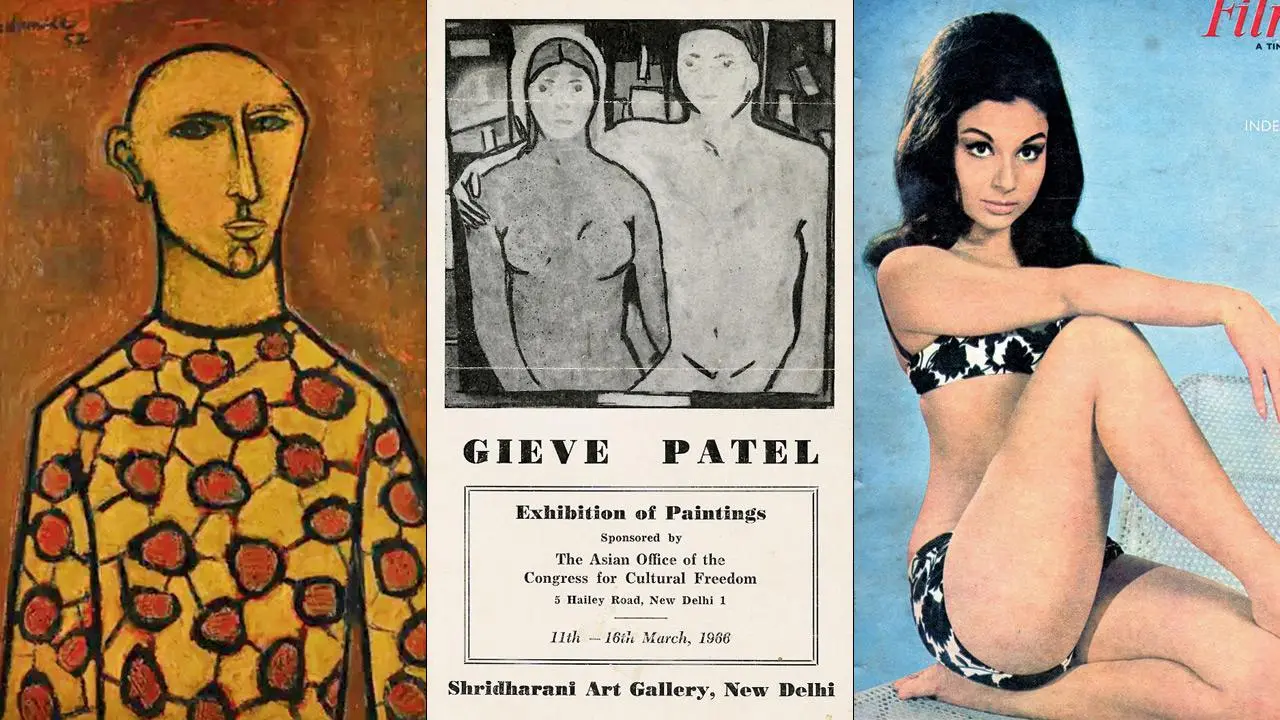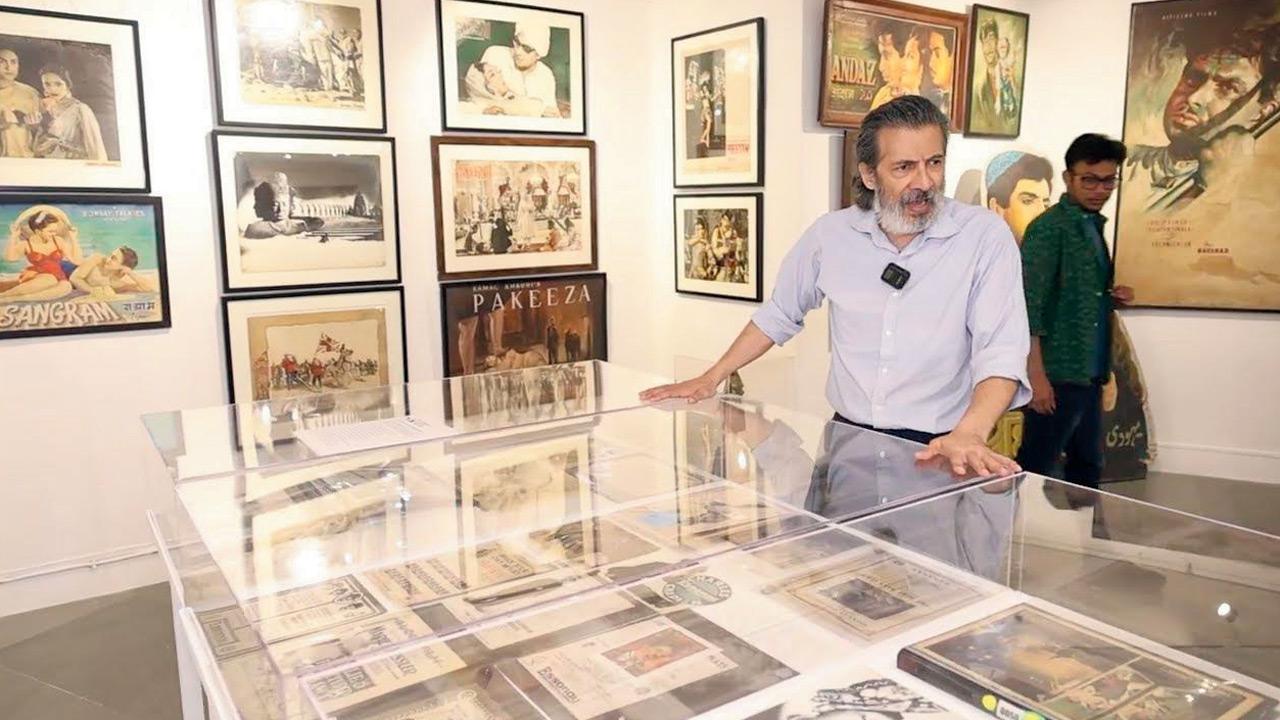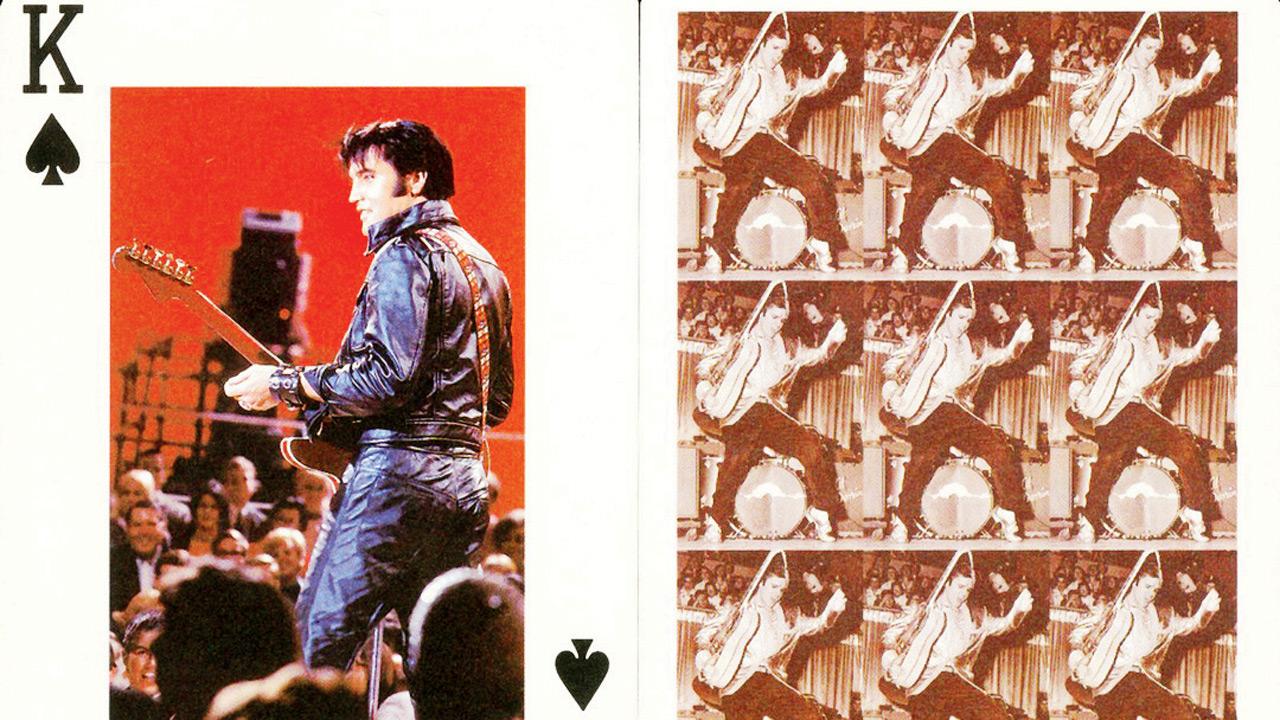A new online research resource by curator and archivist Neville Tuli offers immense scope into the evolution of India through the ages via art, cinema, music and architecture, among other sections

(From left) A view of the Akbar Padamsee painting, Prophet I, sold at an auction; an invite to a 1966 exhibition of Gieve Patel’s paintings in New Delhi; a screenshot from the Sharmila Tagore Archives depicting The actress on a famous cover photograph of a magazine
Last week, curator, archivist and writer Neville Tuli launched the Tuli Research Centre for India Studies (TRIS). TRIS is a digital platform that seeks to function as a search engine and a repository for researchers, scholars, creative professionals, and the general public interested in India Studies. It reflects over 30 years of Tuli’s efforts towards archiving India and providing an alternative educational framework, free from interfering ideology and its dependence on funding. He tells us over the call from Delhi, “Unless education is first fundamentally free of patronage, it becomes very hard to maintain a certain integrity.”

Neville Tuli at an exhibition. Pics Courtesy/ Tuli Research Centre for India Studies, New Delhi (TRIS)
Tuli is of the belief that even though education in India has held a high station within families, the joy and process of learning have been disrespected. Not only is there an emphasis on rote learning, but the focus of knowledge dissemination too remains limited to textual learning, despite so much packed within visual forms, he elaborates. “Knowledge is as inherent in the visual as it is in the textual,” he says. We’re not provided with enough tools to understand the language of the visual. For instance, he reveals, “Indian art was being taught in the 1990s, with black-and-white textbooks without an image because one didn’t want to pay the extra cost for coloured images. Human mind only went along with the logic of the written text, which had boredom inherent in it.”
What’s in store?
The idea for this archive germinated in 2020, and since then the team has been building the platform. There are 16 categories, which range from cinema, fine arts, and photography to architectural heritage, economics, and animal-human-nature continuum. One of the most fascinating archives on the website is of cinema. A search for Raj Kapoor, Gulzar, Amitabh Bachchan, or Jaya Bhaduri, will take you to posters of their films, song-synopsis booklets, out-of-print magazines, books spotlighting their work, old reviews, lobby cards, and photograph stills over the years. “I lived outside India for 30 years. For any Indian who’s lived outside, Hindi songs are the greatest glue to their family and their country. Given my mother was a die-hard fan of Hindi cinema, my love for its songs started as a young child,” Tuli reminisces. “Hindi film songs allow us to believe we belong here.”

Elvis Presley themed playing cards
The basic unit of the website is an object: an icon, a city, a director, an exhibition, a sanctuary, etc., not an idea. “I did not want to impose an ideology,” Tuli shares. Although a quick search on the Internet throws up texts, many old photographic and written ones have been lost. This is where such archives become instrumental to help understand the developing language of modern and contemporary India.
Search engine
Tuli recollects a childhood memory of visiting the collector Hussainibhai Bookletwala. The latter had invited Tuli home after finding him near the Novelty Cinema on Grant Road. “The family of four lived in a confined dark space, yet he had hundreds of little lockers with his 55-year-old collection of Hindi song-synopsis booklets.” That was a defining moment for the archivist, inspiring him to expand his own collection. Tuli subscribed to Marg magazines, and actively looked out for memorabilia everywhere, including auction houses, which sold posters of Hollywood cinema, and personal collections of scholars, collectors, distributors. For the team at TRIS, the biggest challenge was then in transferring this treasure to precisely categorised and updated excel sheets and maintaining them for the website. They tried numerous Excel sheet templates and formats for each particular document type. The end result is arguably, a win-win for India’s envious cultural ecosystem.
Log on to: tuliresearchcentre.org
Guide’s Top 5 cool finds
1 Photographer Felice Beato’s Lucknow series (Mutiny photographs)
2 Gieve Patel’s 1966 solo exhibition invite
3 Film advertisements and handbills of Charlie Chaplin’s work
4 Sharmila Tagore’s photographic stills on Filmfare covers and lobby cards
5 Elvis Presley themed playing cards, 1997
 Subscribe today by clicking the link and stay updated with the latest news!" Click here!
Subscribe today by clicking the link and stay updated with the latest news!" Click here!








